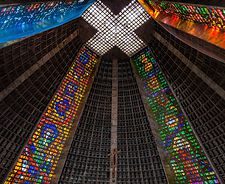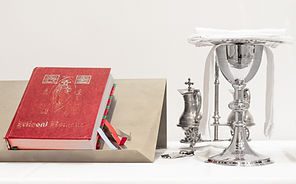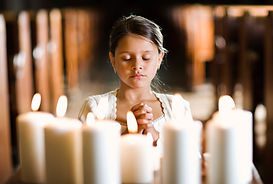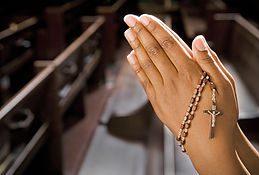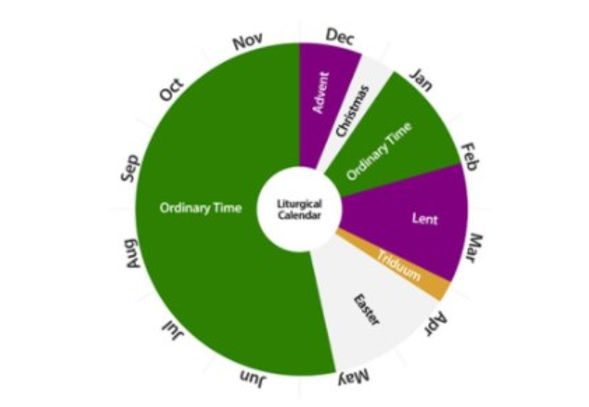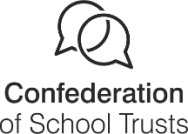As an integral part of our Catholic ethos, all pupils are made aware, throughout the school year, of the changes and celebrations relating to the Church’s Liturgical Year. These events are highlighted in our sacred space in our assembly hall and in every classroom’s personal sacred space. The children are aware of the liturgical changes with the changing colours of our cloths and displays.
Advent
From evening prayer 1 of the Sunday falling on or closest to the 30 November (The First Sunday of Advent) and ends before evening prayer 1 of Christmas, on 24 December, There are 4 Sundays of Advent.
Advent has a twofold character: as a season to prepare for Christmas when Christ’s first coming to us is remembered; as a season when that remembrance directs the mind and heart to await Christ’s Second Coming at the end of time. Advent is thus a period for devout and joyful expectation.
Christmas
From evening prayer 1 of Christmas, ( celebrated on the evening of 24 December, the beginning of the liturgical day of 25 December – Birth of the Lord) to Baptism of the Lord (Sunday after the Solemnity of the Epiphany). Next to the yearly celebration of the paschal mystery, the Church holds most sacred the memorial of Christ’s birth and early manifestations. This is the purpose of the Christmas season.
Ordinary Time
From the Monday following the Baptism of the Lord to the Tuesday before Ash Wednesday. The Sundays in Ordinary Time are numbered consecutively from the Baptism of the Lord. The Sundays of this season do not celebrate a specific aspect of the mystery of Christ. Instead they are devoted to the mystery of Christ in all its aspects. continues after the season of Easter.
Lent
From Ash Wednesday until the Mass of the Lord’s Supper on the evening of Holy Thursday. There are 6 Sundays of Lent.
Lent is a preparation for the celebration of Easter. For the Lenten liturgy disposes both catechumens and the faithful to celebrate the paschal mystery: catechumens, through the several stages of Christian initiation; the faithful, through reminders of their own baptism and through penitential practices.
Holy Week, which begins on the 6th Sunday of Lent, Passion [Palm] Sunday, has as its purpose the remembrance of Christ’s passion, beginning with his Messianic entrance into Jerusalem.
Easter Triduum
Begins with the Evening Mass of the Lord’s Supper on Holy Thursday, reaches its high point in the Easter Vigil and concludes with Evening Prayer on Easter Sunday. Christ redeemed us all and gave perfect glory to God principally through his paschal mystery: dying he destroyed our death and rising he restored our life. Therefore the Easter Triduum of the passion and resurrection of Christ is the culmination of the entire liturgical year. The solemnity of Easter has the kind of pre-eminence in the year that Sunday has in the week.
Easter Season
The Easter season begins with a celebration of the Easter Vigil on Easter Sunday and concludes 50 days later with Pentecost Sunday. The fifty days from Easter Sunday to Pentecost are celebrated in joyful exultation as one feast day,or better as one ‘great Sunday’ These are above all others the days for the singing of the Alleluia.
Ordinary Time
From the Monday following Pentecost Sunday until the Saturday before the 1st Sunday of Advent. The last Sunday is the Solemnity of Christ the King which is Sunday 34 in Ordinary Time. The preceding Sundays are calculated to end with Sunday 34. The Sundays of this season do not celebrate a specific aspect of the mystery of Christ. Instead they are devoted to the mystery of Christ in all its aspects.

